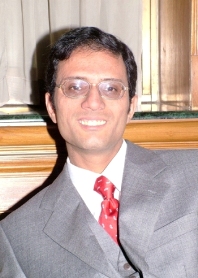Language and architecture Thread poster: Jacek Krankowski (X)
|
|---|
Jacek Krankowski (X) 
English to Polish
+ ...
First, I wanted to thank Roomy for his support to my discussion of cognitive
translation methodology. Second, I am not sure if I am allowed to quote The Name of the Rose without infringing on Umberto Eco\'s copyright, but since I have met him on a couple of occasions, maybe he will forgive me:
\"Two straight and unadorned columns stood on either side of the entrance, which opened, at first sight, like a single great arch; but from the columns began two embrasures ... See more First, I wanted to thank Roomy for his support to my discussion of cognitive
translation methodology. Second, I am not sure if I am allowed to quote The Name of the Rose without infringing on Umberto Eco\'s copyright, but since I have met him on a couple of occasions, maybe he will forgive me:
\"Two straight and unadorned columns stood on either side of the entrance, which opened, at first sight, like a single great arch; but from the columns began two embrasures that, surmounted by other, multiple arches, led the gaze, as if into the heart of an abyss, toward the doorway itself, crowned
by a great tympanum, supported on the sides by two imposts and in the center by a carved pillar, which divided the entrance into two apertures protected by oak doors reinforced in metal. At that hour of the day the weak sun was beating almost straight down on the roof and the light fell obliquely on the
façade without illuminating the tympanum; so after passing the two columns, we found ourselves abruptly under the almost sylvan vault of the arches that sprang from the series of lesser columns that proportionally reinforced the embrasures. When our eyes had finally grown accustomed to the gloom, the
silent speech of the carved stone,accessible as it immediately was to the gaze and the imagination of anyone (for images are the literature of the layman), dazzled my eyes and plunged me into a vision that even today my tongue can hardly describe.\" (Translated from the Italian by William Weaver)
Actually, it would be good if someone could help me to clarify the copyright
controversy right away as I intend to use the above as material for our next translation contest in the Polish SC. What brings me to it here, though, is the interesting link between language and architecture, as illustrated by the following excerpt which is meant for non-commercial, personal use only:
Architecture, Like Language, Must be Clear
Arrol Gellner
San Francisco Chronicle
10 May 2001
(...) architecture is a visual language, and just like a spoken one, it can get cluttered by a lot of extraneous blather. It\'s no accident that grammatical terms such as idiom, context and articulation also appear in the language of architecture. Moreover, many of the bromides of good communication - be clear, be concise, make your point
and get out - apply to design as well. As a great believer in both simple writing and simple design, I humbly offer a few guidelines to help slash architectural bombast:
-- Use a strong central theme rather than a number of weak ones.
Just as the title of an essay informs all of the statements to follow, an architectural composition should have a single dominant idea that suffuses the whole. The theme might lie in the way rooms are organized -
around a courtyard, perhaps, or in a cluster - or it might have to do with using a
favorite combination of materials, or even a certain style of roof. Other elements can support or echo the central theme, but they shouldn\'t compete with it, since this dilutes your overall statement.
-- Remember that, more often than not, simplicity is a virtue.
The mind tires when it\'s forced to wade through a lot of excess information,
whether it\'s verbal or visual. A clear, concise, immediately comprehensible design is far better than a conglomeration of elements drawn from hither and yon. Leave out anything that doesn\'t relate to the
\"argument.\" If you\'re feeling tempted to include, say, a whole plethora of moldings in your design, first ask yourself whether they\'ll strengthen your statement, or just obfuscate it.
-- Know when to shut up.
(...) Just as a speech loses effectiveness if it goes on and on, a strong design motif can become cloying if it\'s endlessly repeated. If you love round-arched windows, for example, you might use them in one prominent focal area and, if it\'s appropriate, repeat them in a few other subsidiary locations - but don\'t go wild and make every window in the house round-topped.
-- Finally, don\'t forget to include a bit of humor.
There\'s enough bad news in the world as it is, so both language and architecture can benefit from the occasional spark of wit. Recall that even the most pious of architectural monuments, the Gothic cathedrals, were rampant with highly personalized carvings of gargoyles that no doubt gave their creators a few good laughs, and they still do the same for us all
these centuries later.
Arrol Gellner is an Emeryville architect who also teaches at Chabot College, Las Positas College and the Building Education Center.
http://www.decormontreal.com/News/newsdetail2.asp?ID=2
Cf. also http://www.berkeleyprize.org/2001/essaysDetail.cfm?PID=1137
\'All are architects of Fate
Working in these walls of Time;
Some with massive deeds and great,
Some with ornaments of rhyme.
Nothing useless is, or low;
Each thing in its place is best;
And what seems but idle show
Strengthens and supports the rest...\'
-Henry Wadsworth Longfellow
From \'The Builders\' ▲ Collapse
| | | |
Parrot 
Spain
Local time: 16:46
Spanish to English
+ ...
| Both are creatures of their times, Jacek | Feb 12, 2003 |
and the esthetics of one age can become the anathema of another.
Probably what we have to seek out is, what makes the masterpieces of each period what they are. Because one thing is evident: reaction and reform begin when there have been enough poor copies to complain about  . .
| | | |
Roomy Naqvy 
India
Local time: 20:16
English to Hindi
+ ...
=======
Jacek, about copyright, you can quote a \"fair amount\" in any critical work. So, Eco should not mind. About using it for translation contest, it should be fair enough not to ask though you may ask informally.
=======
Well, Daedalus would be one example. And Stephen Dedalus would be another. I knew of one man, H Masud Taj, poet and architect, who used to live ... See more =======
Jacek, about copyright, you can quote a \"fair amount\" in any critical work. So, Eco should not mind. About using it for translation contest, it should be fair enough not to ask though you may ask informally.
=======
Well, Daedalus would be one example. And Stephen Dedalus would be another. I knew of one man, H Masud Taj, poet and architect, who used to live in Bombay.
http://www.tribuneindia.com/2002/20020324/spectrum/book10.htm
http://www.hinduonnet.com/folio/fo0109/01090320.htm
http://www.carleton.ca/ta/brownbags/brownbagsfall.htm
Roomy
_________________
[ This Message was edited by:on2003-02-12 20:04] ▲ Collapse
| | | |
Marta Argat 
Local time: 17:46
Chinese to Ukrainian
+ ...
| 1) sacral architecture; 2) superstitions | Feb 12, 2003 |
A thought provoking idea, thank you Jacek!
Grygory Logvyn ( Ukrainian architect and historian of art, 1910 - 2001 ) used to point out that sacral architecture of any nation accumulates the best features of the nation\'s contemporary ethetics.
IMHO, we may say the same about religious texts: they are samples of a smart rhetorics.
Another example of a \"speaking environement\" is the traditional Chinese architecture. Almost every part of a patr... See more A thought provoking idea, thank you Jacek!
Grygory Logvyn ( Ukrainian architect and historian of art, 1910 - 2001 ) used to point out that sacral architecture of any nation accumulates the best features of the nation\'s contemporary ethetics.
IMHO, we may say the same about religious texts: they are samples of a smart rhetorics.
Another example of a \"speaking environement\" is the traditional Chinese architecture. Almost every part of a patrimony has a social significance and its name becomes a figure of speach/euphemism. The plan of a building and its decoration are based on Fengshui: the science where the words ( esp. homonyms ) play a big role. ▲ Collapse
| | |
|
|
|
Clarisa Moraña 
United States
Local time: 09:46
Member (2002)
English to Spanish
+ ...
| Architecture speaks different languages | Feb 13, 2003 |
The analysis you-ve given works for modern architecture, based on the famous words of Mies van der Rohe: Less is more. Nevertheless I think, that architecture always speaks a certain language -or different langagues-, and it follows certain rules. It has a special grammar, a special culture, a special background.
When you see a building, why do you know it\'s -let\'s say- art decó? or Chinese? how do you know that you are staring at a Romanic church? Because the building you ar in fr... See more The analysis you-ve given works for modern architecture, based on the famous words of Mies van der Rohe: Less is more. Nevertheless I think, that architecture always speaks a certain language -or different langagues-, and it follows certain rules. It has a special grammar, a special culture, a special background.
When you see a building, why do you know it\'s -let\'s say- art decó? or Chinese? how do you know that you are staring at a Romanic church? Because the building you ar in front of includes certain signs (features, elements) that you understand. All the elements of a building are signs transmitting a meaning, an idea (are we talking about semiotics?)
And architecture speaks different languages. Languages that change with time. The Greek architecture had certains elements (words, perhaps?) that talked about it: doric, ionic, and corinthian columns, entablatures, capitals...
And Greek architecture had a grammar. That\'s why we are able to differenciate an old Greek temple from a new university building using corinthian columns.
The Twentieth century introduced the curtain wall.
Architecture speaks different languages, and as any other languages, it evolves with time.
I wish I could know which are the words of a building. I wish I could know about its grammar in order to transmit my message. Architects do speak that language.
Regards,
Clarisa Moraña ▲ Collapse
| | | |
Parrot 
Spain
Local time: 16:46
Spanish to English
+ ...
| Structure as a primal language: Meaning beneath the skin | Feb 14, 2003 |
There are certain \"elements\" in architecture that speak a universal language. We all know what will give us shelter. We all seek structural stability. We all instinctively understand load, weight, stress, vertigo. A structure that solves these problems in a way that speaks a straightforward, reassuring language - regardless of the technological solutions at its disposal, or precisely expressing the technological solutions at its disposal, appeals as a statement, over and above its utilitarian ... See more There are certain \"elements\" in architecture that speak a universal language. We all know what will give us shelter. We all seek structural stability. We all instinctively understand load, weight, stress, vertigo. A structure that solves these problems in a way that speaks a straightforward, reassuring language - regardless of the technological solutions at its disposal, or precisely expressing the technological solutions at its disposal, appeals as a statement, over and above its utilitarian ends. Anyone can make a box and put furniture in it. Not everyone can make that box speak for the people who live in it. I guess this is when we start talking about \"architectural idiom\". ▲ Collapse
| | | |
Ildiko Santana 
United States
Local time: 07:46
Member (2002)
Hungarian to English
+ ...
MODERATOR | Poetry ~~ Architecture | Feb 17, 2003 |
\"The architect must not talk vaguely as the ornamentalist but rather in a concrete way: his language is geometry. To find the forms proper to each function (which give character) is the architect\'s task.\"
\"In the world there is not a single column which is vertical (although on many occasions people have wanted it to be so). The nature of things demands that they are inlined and it is only necessary to study the degree of inlination possible.\"
Who... See more \"The architect must not talk vaguely as the ornamentalist but rather in a concrete way: his language is geometry. To find the forms proper to each function (which give character) is the architect\'s task.\"
\"In the world there is not a single column which is vertical (although on many occasions people have wanted it to be so). The nature of things demands that they are inlined and it is only necessary to study the degree of inlination possible.\"
Whose thoughts could possibly say it better than Gaudi\'s, one of the most fascinating architects and *translators* of all times; having translated his visions and beliefs into pure structures of beauty yet convenience that stand up to all the storms of our times! ▲ Collapse
| | | |
Ouadoud 
Local time: 17:46
English to Arabic
+ ...
| Language and architecture! | Feb 19, 2003 |
This is really an interesting topic. Thanks for the choice!
it just reminds me one of my professors at italian Politecnico di Milano, Facoltà di Architettura, a quite famous architect teaching us technical drawing & design, who refused my works on Arabic Calligrafy because he could not evaluate them.. He was nevertheless a great professor..
Ouadoud
[ This Message was edited by: Ouadoud on 2003-04-01 13:26]
| | |
|
|
|
| In light of all of the above... | Mar 22, 2003 |
Richard Rogers is clearly the architectural version of Esperanto.
Le Corbusier is the French of Sartre
Gaudi is the Spanish of Cervantes
Christoper Wren is dog Latin
Discuss
| | | |
Roomy Naqvy 
India
Local time: 20:16
English to Hindi
+ ...
| In the light of what... ? | Mar 29, 2003 |
Quote:
On 2003-03-22 06:44, The Tautologist wrote:
Richard Rogers is clearly the architectural version of Esperanto.
Le Corbusier is the French of Sartre
Gaudi is the Spanish of Cervantes
Christoper Wren is dog Latin
Discuss
I really don\'t know how the post above is linked to the discussi... See more Quote:
On 2003-03-22 06:44, The Tautologist wrote:
Richard Rogers is clearly the architectural version of Esperanto.
Le Corbusier is the French of Sartre
Gaudi is the Spanish of Cervantes
Christoper Wren is dog Latin
Discuss
I really don\'t know how the post above is linked to the discussion about *language and architecture*. Probably, someone might enlighten me better.
Roomy
[addsig] ▲ Collapse
| | | |
Jacek Krankowski (X) 
English to Polish
+ ...
TOPIC STARTER | Dan's proposal | Mar 31, 2003 |
is a tangible proof that there are no taboos on ProZ as any topic whatsoever can be proposed here for discussion (by moderators).
It is also a healthy proof of the fact that not every controversial discussion needs to end in a brawl, especially if the proposed topic seems to be of no interest to anyone.
| | | |
Ouadoud 
Local time: 17:46
English to Arabic
+ ...
| Milestone in the heart of the topic | Mar 31, 2003 |
Quote:
On 2003-03-29 16:53, roomynaqvy wrote:
Quote:
On 2003-03-22 06:44, The Tautologist wrote:
Richard Rogers is clearly the architectural version of Esperanto.
Le Corbusier is the French of Sartre
Gaudi is the Spanish of Cervantes
Christoper Wren is dog Latin
Discuss
... See more
| | |
|
|
|
Jacek Krankowski (X) 
English to Polish
+ ...
TOPIC STARTER
What puzzles me most, of course, is the infinite depth and wisdom of \"Christoper Wren is dog Latin.\" What comes next, after a Ph.D. in literature and architecure?
| | | |
Ouadoud 
Local time: 17:46
English to Arabic
+ ...
That Latin dog story is indeed puzzling.
On the other hand, it may be very interesting to search in Cervantes Don Quichotte structure compared to Gaudi\'s Sagrada Famiglia complexity and bearing in mind the 300 years that separates the 2 maestros.
In all cases, this literature/architecture approach is really very.. constructive.
| | | |





















